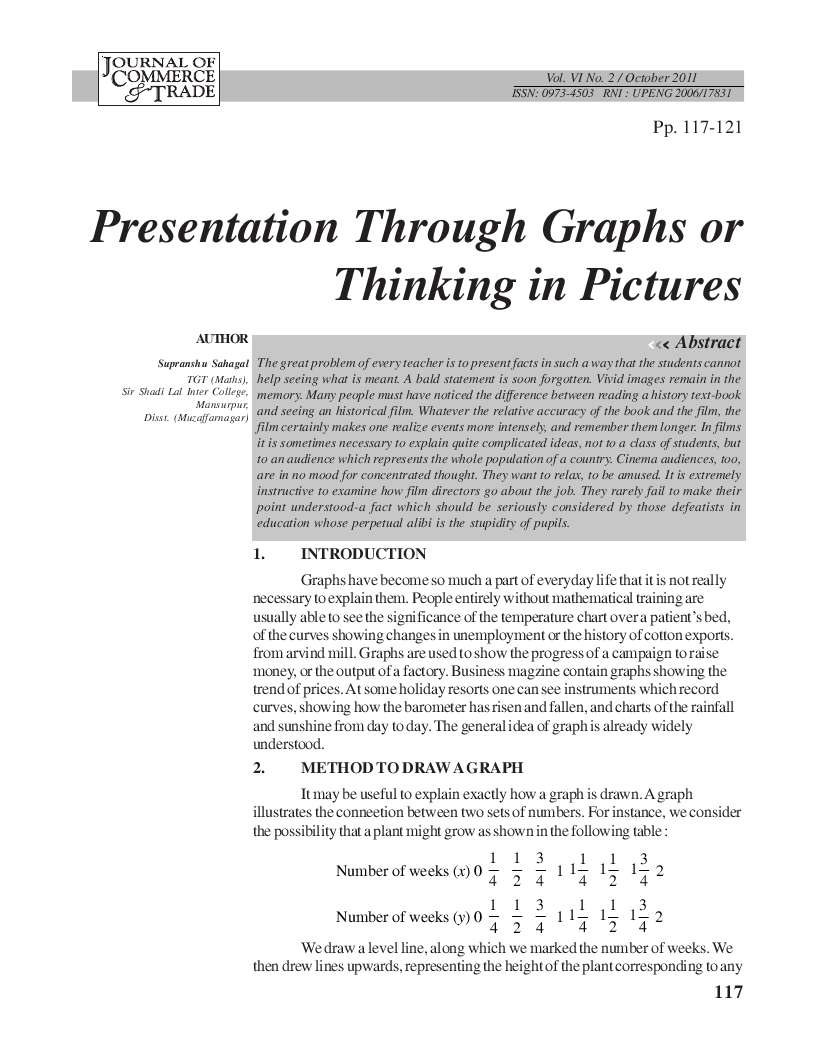Presentation through Graphs or Thinking in Pictures
DOI:
https://doi.org/10.26703/jct.v6i2.344Keywords:
Graphs, Pictures, Graph Charts, Graph PresentationAbstract
The great problem of every teacher is to present facts in such a way that the students cannot help seeing what is meant. A bald statement is soon forgotten. Vivid images remain in the memory. Many people must have noticed the difference between reading a history text-book and seeing an historical film. Whatever the relative accuracy of the book and the film, the film certainly makes one realize events more intensely, and remember them longer. In films it is sometimes necessary to explain quite complicated ideas, not to a class of students, but to an audience which represents the whole population of a country. Cinema audiences, too, are in no mood for concentrated thought. They want to relax, to be amused. It is extremely instructive to examine how film directors go about the job. They rarely fail to make their point understood-a fact which should be seriously considered by those defeatists in education whose perpetual alibi is the stupidity of pupils.
Downloads
Metrics
References
Alexander, Michael. “Mac Charting Tools.” MacWorld. January 1988.
An excellent if very brief introduction to Excel graphics. Contains much sensible advice for the beginner and the expert alike.
Anderson, Anker V. Graphing Financial Information. New York, NY: National Association of Accountants, 1983.
Brief, concise, and to the point, this overview of the use of graphs is a thoughtful articulation of good graphing practices.
Gray, Jack and Johnston, Kenneth S. Accounting and Management Action (Second Edition). New York, NY: McGraw-Hill Book Company, 1973.
Your basic accounting text.
Huff, Darrell. How to Lie With Statistics. New York, NY: W. W. Norton & Company. 1954.
The all-time classic that discusses the misrepresentation of data. Essential for all who are serious about understanding the honest presentation of numerical (statistical) data.
Johnson, Johnny R., Richard R. Rice, and Roger A. Roemmich. “Pictures that Lie: The Abuse of Graphs in Annual Reports.” Management Accounting. October 1980.
Long, Rick. “Presentation Graphics.” Infoworld. September 21, 1987.
A comparative analysis of six business-oriented software packages for the PC (Harvard Graphics, Energraphics, VP Graphics, Windows Graph, and Picture Perfect). Other packages mentioned in side bars.
Miller, Girard, Ed. Effective Budgetary Presentations: The Cutting Edge. Chicago, IL: Government Finance Officers Association. May 1982.
While not about graphs, per se, this book reproduces many examples of graphical technique not limited to the formats discussed here.
Nelson, Stephen L. “Communicating Financial Ratios Graphically.” Lotus. September 1987.

Downloads
Published
How to Cite
Issue
Section
License
Copyright (c) 2011 Supranshu Sahagal

This work is licensed under a Creative Commons Attribution 4.0 International License.














